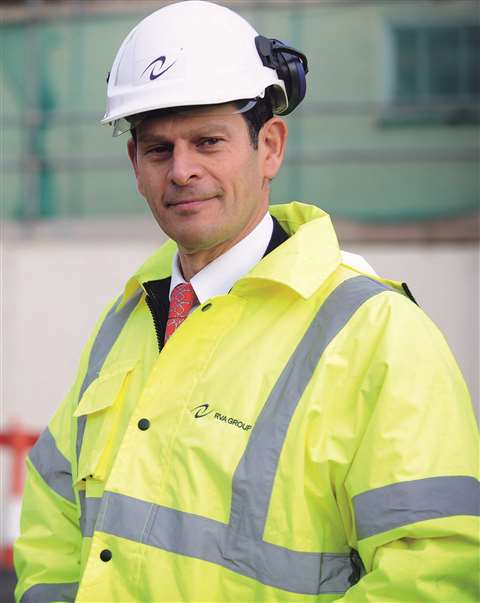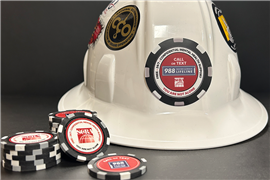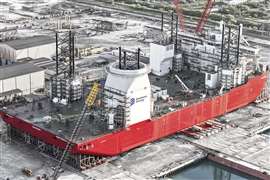Richard Vann – Dismantling and rebuilding
31 March 2020
When materials reuse and recycling is high on the general environmental agenda it is no surprise that the dismantling of processing plants for re-erection, remains a popular consideration.

The careful salvage of complete or partial assets is nothing new, so it is only right that this is validated or discounted as a feasible option. Just because plant may be at the end of its useful life for one organisation doesn’t mean it cannot have operational potential elsewhere.
However, there are naturally numerous criteria to thoroughly evaluate, to ensure that such a dismantling project represents a safe, cost-effective and environmentally sound route for the plant. And if the project does go ahead, what then? Here are five key pieces of advice:
Confirm that the project is feasible
In truth, these projects only work in very specific circumstances. Of almost 800 RVA projects completed worldwide, to date, fewer than 1% of assets have been dismantled for re-erection. When this route is of interest, an impartial feasibility and options study should be conducted to uncover an objective, realistic view as to its true liability or opportunity.
Multiple factors must be considered. At a very basic level, the plant and/or machinery should still comply with current legislative standards. Many assets – particularly those constructed in the 1960s and 1970s – have simply reached the end of their design life, certainly in the Western Hemisphere. They therefore represent too many inefficiencies – not to mention safety and reputational risks – to warrant ongoing operation, or they may have reached a “sell by date” when it comes to compliance, which naturally makes dismantling a “no go”.
If the above compliance boxes are ticked, other data-driven findings must also be uncovered, including realistic costs, the delta in value that the sale will attract relative to the scrap alternative, timeframe and the vendor’s business drivers – to name just a few.
Find a plant buyer
On occasions the “buyer” for a dismantled asset is a sister company in the same global group as the plant’s seller. The driver for the purchase may be to enhance production of a similar plant on the receiving company’s site, to provide a source of major spares or even because the second-hand plant will provide a useful “stop gap” while a more modern facility is being built.
If an external buyer is sought, the completion of a mutually-attractive deal is a challenge, as the costs of sequentially dismantling, refurbishing and relocating the plant – on top of the baseline decommissioning fees themselves – commonly eat into any potential profit margin. Delays which are common in the negotiation process will also contribute to excessive site security, maintenance, leasing and other holding costs, so financial awareness must stretch far beyond the price tag on the plant itself. The numbers matter more than ever for this type of project.
Do not underestimate the complexity of the project
Dismantling for re-erection is a technically demanding and resource-intensive assignment, so the scheduling of work and the formation of a suitably skilled project team should also form part of the business case.
If the dismantled asset will not remain in imminent future use – perhaps because it will be stored prior to shipment and/or re-erection – this will almost certainly impede the project’s viability as the likelihood of corrosion, decay and/or contamination is simply too great. Preservation to the required standards can be costly and difficult to achieve.
Maintaining the operational integrity of every component part is critical – otherwise, a highly-valuable resource could become nothing but a very expensive scrap metal jigsaw.
Define ‘clean’
Before any decontamination works begin, the asset’s condition – including the type and level of hazardous materials, cleanliness and structural integrity – must be rigorously audited. It is important to gather as much information as possible so that appropriately-skilled personnel – equipped with the necessary PPE (personal protective equipment) – can then proceed with minimum risk.
In the general dismantling and demolition world, the objective should not be to over-clean an asset so that it becomes completely contaminant-free, but rather the priority is to take it to a “known state”. However, as relocation projects often involve taking plant across international boundaries, the decontamination regime typically must be set at a very high level.
In practice, it will have to be mandated for safe shipment, but remember that with the international transfer of plant, there are usually varying standards at play. Works must therefore comply with the regulation, documentation and certification rules of the plant’s origination and destination locations. However, to ensure best practice and maximum peace of mind, legislative parameters should only ever set the very minimum criteria.
Master matchmarking and laser scanning
Prior to dismantling, it is often recommended that the plant is fully digitally recorded by a specialist laser scanning team. This will ensure that on re-erection, the asset will be correctly configured and aligned. Once sufficiently cleaned, every individual component part of the plant should be match-marked with unique codes for ease and accuracy of reconstruction at the onward destination, and ideally carefully packed and shipped with accompanying drawings and maintenance records – where available – to aid the reassembly process. The specialist refurbishment and certification of some components may also be required, so it is crucial that you should maintain a detailed “log” of everything.
- Article first published in the March 2020 issue of Demolition & Recycling International






